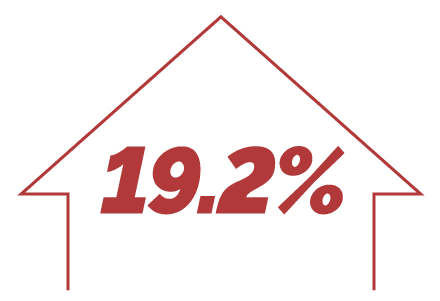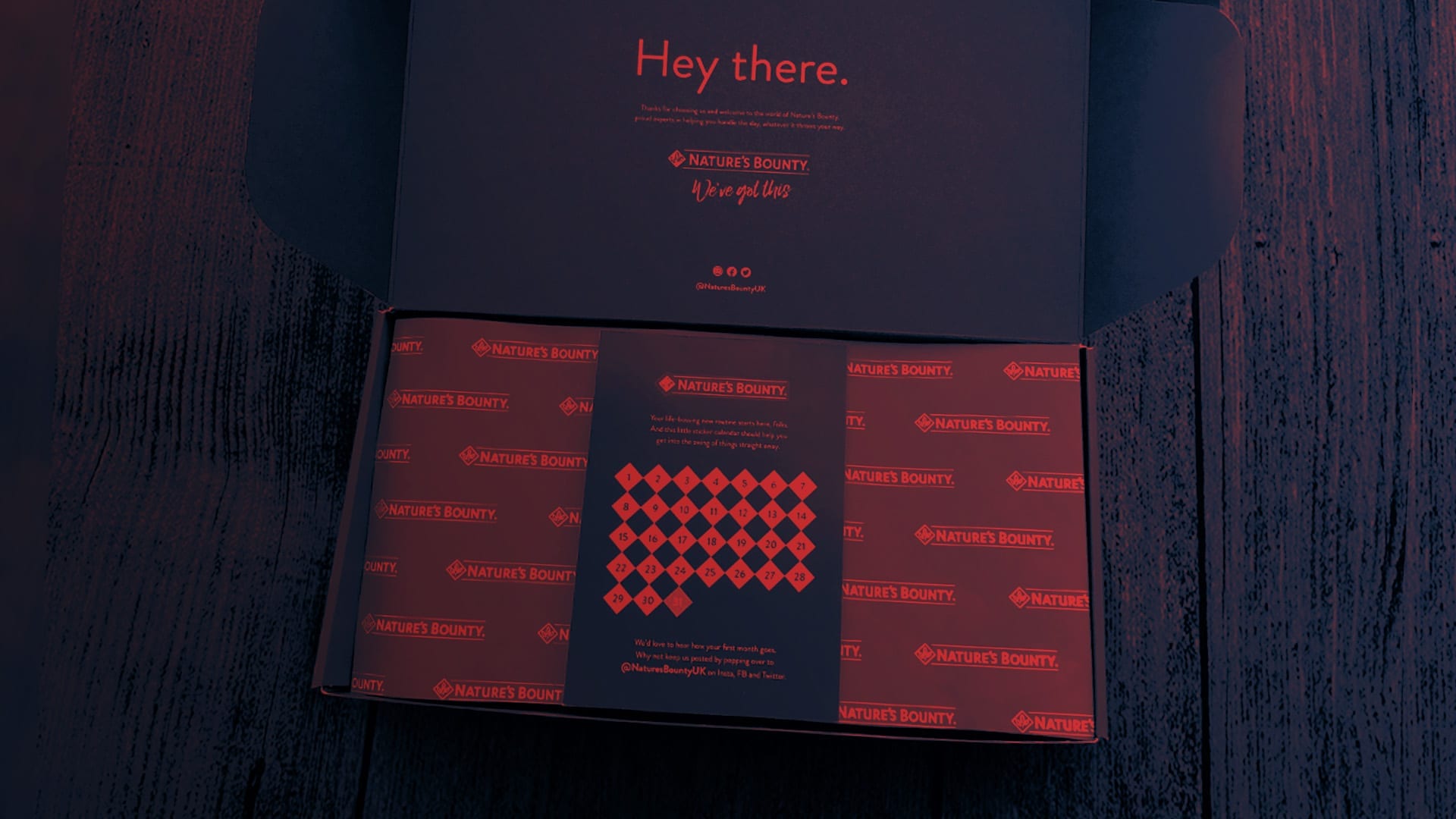

Given this success, the D2C market is projected to grow by a staggering 19.2% in 2021 alone.
Fuelling these shifts lies a change in shopper behaviour and psychology. New research shows that 55% of consumers prefer to buy from brands directly, while a further 40% of shoppers say they will purchase from a D2C brand in the next five years.


55% of consumers prefer to buy from brands directly
While the direct model has gained significant traction across sectors, studies suggest there is still considerable room for growth. From our own proprietary research, we discovered that 82% of consumers currently have between zero and four D2C relationships. This finding shows that the market is still in its relative infancy.
For legacy brands, there is now a massive opportunity to disrupt the status quo with a D2C offering that delivers on the expectations, values and desired experiences of modern consumers.
As Karen Ehrlich, Marketing & Consumer Engagement Director, U.K. & Ireland at Clinique, says, “D2C is clearly a win-win for brands and consumers.”
Let’s uncover why.
The customer values that are driving adoption
Knock-on effects from the COVID-19 pandemic have accelerated the shift towards digital platforms. This offers shoppers an easier and more convenient customer experience. But this transition is nothing new; in fact, D2C players have been capitalising on this new set of experiences for years.
To understand why D2C brands have been so successful at customer acquisition, retention and loyalty, we need to first ascertain what specific values these players are delivering on.
According to our research, values such as ‘convenience’ and ‘ease of use’ top the list of D2C benefits, with a resounding 94% of shoppers choosing at least one of these as their reason for shopping with D2C brands.


‘Convenience’ and ‘ease of use’ top the list of D2C benefits, with a resounding 94% of shoppers choosing at least one of these as their reason for shopping with D2C brands.
These core drivers are pivotal in motivating shoppers to engage with D2C brands in the first instance, but teaming ‘convenience’ and ‘ease of use’ with other key values such as ‘control over my purchases’ and ‘the ability to customise’ is what truly differentiates D2C from other e-commerce strategies.
At Initials, we use a simple equation that cements the value of a direct proposition: convenience + customisation = D2C conversion.


We believe it’s not enough for a brand to simply launch a D2C channel; it has to be relevant, too. With increased consumer preference on values such as convenience, ease of use, customisation and control, legacy brands need to build on these values in ways that feels natural and relevant to their brand identity.
Clinique’s Karen Ehrlich, agrees with this, commenting, “It’s about having a one-to-one dialogue between the brand and consumer. This means D2C brands can be in full control over the range of brand experiences they offer. By tailoring communications to the consumer, D2C brands can ensure content is always relevant and personalised, which leads to a better customer experience.”



“It’s about having a one-to-one dialogue between the brand and consumer. This means D2C brands can be in full control over the range of brand experiences they offer”
By applying these strategies, brands can identify the gaps in their offering and design solutions that are both relevant and compelling for individual shoppers.
A link between purchasing intent and category
With the D2C market still undergoing a period of growth, some categories have emerged as clear leaders in the acquisition of market share.
Direct brands have used advanced customer data metrics to personalise the entire brand experience, allowing for marketing campaigns that drive at the heart of the individual’s wants and needs. This set of tech solutions has optimised the relationship with the customer through automation of processes and sufficient scalability in volume and sales channels.
Brewgooder’s James Hughes says, “The best D2C brands tap into customer behaviours and how people do things. It’s this personalisation approach that has really evolved D2C relationships and processes beyond just direct comms.”
Beauty, for example, is one of the leading D2C categories, with brands such as Glossier and Harry’s setting the standard for customer-first strategies that are centred around convenience and customisation. Unlike traditional competitors, these new players have experimented with distribution models and designed a customer experience that delivers on the values shoppers care about.
Food is another flourishing category, with D2C brands like Hello Fresh, Gousto and Pact Coffee shaking up the sector and redefining how consumers browse, shop and buy. In our research, consumers labelled ‘food’ as the number one D2C category they were most likely to purchase from.
While some categories may have had a head start in adopting and applying the D2C model, we’re now seeing this become accepted more used by brands across a number of different sectors.
Emerging D2C categories
Some categories are now in the early stages of acquiring an engaged and loyal customer base. Alcohol, for example, is beginning to infiltrate the space, with D2C sales increasing by a marked 27% during the pandemic.
This shift is driven by the likes of Brewgooder, which offers a subscription-based service model that makes it easy for customers to sample small-batch beers that are delivered straight to their door.
Brewgooder’s James Hughes comments on the adoption of the D2C model, saying, “We’re now at a point where everyone feels they can do D2C. The companies that really do it best are the ones that utilise all the strengths of their brand. Our aim is to interlink all of our services, so we can unlock the potential of the online consumer journey and transition effortlessly from online to offline.”



“We’re now at a point where everyone feels they can do D2C. The companies that really do it best are the ones that utilise all the strengths of their brand. Our aim is to interlink all of our services, so we can unlock the potential of the online consumer journey and transition effortlessly from online to offline.”
Even industry giants Diageo are getting in on the action, launching a stand-alone website for its Haig Club scotch whisky brand as recently as September 2020. For legacy brands, finding these rich territories for growth will offer a compelling opportunity to carve out a niche swathe of the market. Achieving this, however, will mean developing an offering that uses D2C as one channel in a wider, connected experience.
This is where legacy brands have ample room to leverage the strengths of their existing customer base and consumer journey. By providing a D2C offering that is part of a larger, connected experience, legacy brands can make their market positioning more relevant and deliver products and services in ways that resonate with today’s shoppers.
Future growth for D2C brands
As we analyse the D2C space, it’s clear that direct brands have succeeded by delivering on the values that matter most to a new generation of shoppers. This, in combination with a more structured and in-depth data set, has enabled a much more personalised brand experience.
With fewer barriers to entry, D2C businesses have been able to deliver higher margins while maintaining greater control over their brand, marketing and sales strategy.
Since more than 50% of shoppers have less than two D2C relationships, there is still plenty of room for brands to enter the space. This is especially true for heritage brands that may have a more traditional product offering.
By tapping into new customer values, building advanced data tracking systems and leveraging the heritage aspect of their brand, businesses can evolve their D2C capabilities and establish an offering that aligns with modern consumer needs.
While the number of current D2C relationships may be fairly low, brands should expect that increased competition in the space will make this a key battleground for customer acquisition in years to come.
Rory Sutherland, Vice Chairman at Ogilvy UK, has discussed the concept of a “cognitive maximum”, implying there may well be a limit to the number of D2C relationships consumers would be willing to have. This makes sense, given that a high number of D2C subscriptions could become a logistical burden for consumers.
In fact, the defining criteria for success in this space may well be determined by the product serving a behavioural need. For example, Gousto have solved a coordination issue that consumers didn’t even know they had. By providing people with a menu of items, rather than having to shop for a long list of ingredients before cooking, Gousto has saved people time, money and mental space.
In a world where there will always be a need for some form of aggregation, it’s clear D2C will remain selective and hard-won by brands that will need to consistently justify their role in consumers’ lives.
The brands that can build relevant, personalised and connected experiences that meet the wants and needs of a new generation of shoppers will be the true winners of the D2C space.



